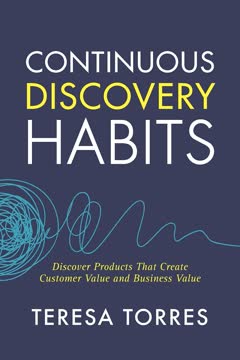Key Takeaways
1. Continuous Discovery: The Key to Building Products Customers Want
At a minimum, weekly touchpoints with customers by the team building the product where they conduct small research activities in pursuit of a desired outcome.
Continuous discovery is a structured approach to product development that involves ongoing customer research and experimentation. It helps teams consistently deliver value by:
- Engaging with customers weekly to understand their evolving needs
- Conducting small, frequent research activities rather than large, infrequent studies
- Pursuing a clear desired outcome, not just shipping features
- Involving the whole product team (product manager, designer, engineer) in customer research
This approach allows teams to stay closely aligned with customer needs, adapt quickly to new information, and make evidence-based product decisions. By making discovery an ongoing habit rather than a one-time phase, teams can more reliably create products that customers truly want and use.
2. Focus on Outcomes, Not Outputs, to Drive Real Value
You are never one feature away from success...and you never will be.
Shift mindset from outputs to outcomes. This means:
- Defining success by the value created for customers and the business, not just features shipped
- Setting clear, measurable outcomes (e.g., increase customer retention by 10%)
- Allowing teams autonomy in how to achieve the outcome
- Regularly evaluating if product changes are driving the desired outcome
Benefits of an outcome focus:
- Aligns team efforts with business goals
- Encourages innovation in how to solve problems
- Allows for pivoting when initial solutions don't work
- Measures true impact, not just activity
By focusing on outcomes, teams avoid the "build trap" of endlessly shipping features without creating real value. They stay motivated by seeing the tangible impact of their work on customers and the business.
3. Map and Prioritize Customer Opportunities
Structure is complicated. It gets done, undone, and redone.
Create an opportunity solution tree. This visual tool helps teams:
- Map out the customer needs, pain points, and desires (opportunities)
- Structure opportunities hierarchically, from broad to specific
- Prioritize which opportunities to address first
- Generate and evaluate potential solutions
Steps to build and use the tree:
- Start with the desired outcome at the top
- Branch out to high-level opportunity areas
- Break down each area into more specific opportunities
- Assess opportunities based on:
- Importance to customers
- Potential impact on the outcome
- Feasibility to address
- Select a target opportunity to focus on
- Generate multiple solution ideas for that opportunity
The tree provides a shared understanding of the problem space and helps teams make strategic decisions about where to focus their efforts. It's a living document that evolves as the team learns more about their customers and market.
4. Conduct Regular Customer Interviews to Uncover True Needs
People don't know what they want until you show it to them.
Interview to discover opportunities, not validate solutions. Key principles:
- Conduct weekly interviews to maintain a continuous learning loop
- Focus on collecting specific stories, not general opinions
- Ask about recent experiences, not hypothetical future behavior
- Listen for underlying needs, not just feature requests
Interview structure:
- Set scope: Define what part of the customer experience to explore
- Ask for a specific story: "Tell me about the last time you..."
- Dig deeper: Use follow-up questions to understand context and motivations
- Capture opportunities: Note needs, pain points, and desires expressed
- Synthesize: Create an interview snapshot summarizing key insights
Regular interviewing helps teams stay connected to customer realities, catch emerging trends, and build empathy. It provides a constant stream of opportunities to inform product decisions.
5. Generate and Test Multiple Solution Ideas
Creative teams know that quantity is the best predictor of quality.
Ideate broadly, then focus. Approach:
- Generate many ideas individually (aim for 15-20 per person)
- Share ideas as a team and build on each other's concepts
- Select a diverse set of 3 promising solutions to explore further
Benefits of multiple solutions:
- Increases chances of finding innovative approaches
- Reduces fixation on a single idea
- Allows for comparing and contrasting options
Testing process:
- Create simple prototypes or mockups of each solution
- Define clear evaluation criteria (e.g., "7 out of 10 users can complete the task")
- Test with a small number of customers (5-10)
- Compare results across solutions
- Iterate or pivot based on learnings
By exploring multiple solutions in parallel, teams can more quickly identify winning ideas and avoid overcommitting to suboptimal approaches.
6. Identify and Test Critical Assumptions Early
Good tests kill flawed theories; we remain alive to guess again.
Surface and test risky assumptions. Steps:
- List assumptions for each solution idea (desirability, viability, feasibility)
- Map assumptions based on importance and uncertainty
- Identify "leap of faith" assumptions (high importance, high uncertainty)
- Design small experiments to test these critical assumptions
- Set clear success criteria before running tests
Types of assumption tests:
- Smoke tests: Gauge interest before building (e.g., landing page sign-ups)
- Wizard of Oz: Simulate functionality manually
- Concierge: Provide high-touch service to early adopters
- Fake door: Measure clicks on non-existent features
Testing assumptions early helps teams:
- Validate or invalidate ideas quickly
- Reduce risk of building the wrong thing
- Learn and iterate faster
- Make data-informed decisions
By systematically identifying and testing assumptions, teams can increase their confidence in solution ideas before investing heavily in development.
7. Measure Impact Throughout Discovery and Delivery
Your delusions, no matter how convincing, will wither under the harsh light of data.
Instrument products to measure outcomes. Key steps:
- Define clear metrics tied to your desired outcome
- Implement analytics to track those metrics
- Establish a baseline before making changes
- Measure impact of each product iteration
- Look for leading indicators of long-term outcomes
Types of metrics to consider:
- Product metrics: Directly measure product usage and behavior
- Business metrics: Measure impact on company goals (revenue, retention)
- Customer metrics: Measure customer satisfaction and success
Best practices:
- Start small: Don't try to measure everything at once
- Focus on actionable metrics that inform decisions
- Look for correlations between product changes and outcome metrics
- Be patient: Some impacts take time to materialize
Continuous measurement allows teams to:
- Validate if solutions are driving desired outcomes
- Identify areas for improvement
- Make data-driven prioritization decisions
- Demonstrate the value of their work to stakeholders
8. Manage Discovery Cycles and Course-Correct as Needed
Trusting the process can give you the confidence to take risks.
Embrace the messy reality of discovery. Key principles:
- Expect surprises and be prepared to pivot
- Break large opportunities into smaller, testable chunks
- Balance short-term wins with long-term strategic bets
- Recognize when to persevere and when to change direction
Common discovery scenarios:
- Learning an opportunity isn't as important as initially thought
- Realizing a solution is more complex than anticipated
- Uncovering new constraints or requirements
- Discovering unexpected customer behavior or preferences
When facing surprises:
- Re-evaluate assumptions and hypotheses
- Return to earlier steps in the discovery process if needed
- Communicate changes and rationale to stakeholders
- Look for alternative paths to the desired outcome
By staying flexible and responsive to new information, teams can navigate the inherent uncertainty of product development and find the best path to creating value.
9. Collaborate with Stakeholders by Showing Your Work
The more leaders can understand where teams are, the more they will step back and let teams execute.
Build trust through transparency. Strategies:
- Use visual artifacts (opportunity trees, story maps) to share thinking
- Start with the desired outcome, not just solutions
- Walk stakeholders through your discovery process and key decisions
- Invite input and co-creation at appropriate points
Benefits of stakeholder collaboration:
- Leverages diverse perspectives and expertise
- Builds buy-in for product decisions
- Reduces resistance to new ideas
- Aligns product work with broader business goals
Tips for effective stakeholder management:
- Tailor level of detail to each stakeholder's needs and interests
- Regular, brief updates are often better than infrequent, long presentations
- Be open to feedback, but use data and customer insights to support decisions
- Celebrate both successes and valuable failures
By actively involving stakeholders in the discovery process, teams can create a shared understanding of product strategy and increase organizational support for their work.
Last updated:
FAQ
What's "Continuous Discovery Habits" about?
- Focus on Discovery: "Continuous Discovery Habits" by Teresa Torres is about adopting a structured and sustainable approach to product discovery that continuously involves customer input.
- Framework and Habits: The book introduces a framework and a set of habits that help product teams discover opportunities and solutions that create customer and business value.
- Outcome Over Output: It emphasizes focusing on outcomes rather than outputs, ensuring that product decisions are driven by customer needs and business goals.
- Iterative Process: The book advocates for an iterative process where discovery and delivery are interwoven, allowing teams to adapt and learn continuously.
Why should I read "Continuous Discovery Habits"?
- Practical Guidance: The book provides practical guidance on how to implement continuous discovery in your product development process.
- Improved Decision-Making: It helps improve decision-making by teaching how to balance customer needs with business outcomes.
- Real-World Examples: The book includes real-world examples and case studies that illustrate the application of continuous discovery habits.
- Empowerment: It empowers product teams to take ownership of their discovery process, leading to better products and increased confidence in their work.
What are the key takeaways of "Continuous Discovery Habits"?
- Continuous Customer Engagement: Regularly engage with customers to discover and validate opportunities and solutions.
- Outcome-Oriented Mindset: Shift from focusing on outputs to achieving desired outcomes that benefit both customers and the business.
- Structured Discovery Process: Use tools like opportunity solution trees to map and prioritize opportunities and solutions.
- Iterative Learning: Embrace an iterative approach to learning and adapting, ensuring that discovery and delivery inform each other.
What is the "Opportunity Solution Tree" in "Continuous Discovery Habits"?
- Visual Framework: The opportunity solution tree is a visual framework that helps teams map out paths to achieve desired outcomes.
- Structure and Prioritize: It structures the opportunity space, allowing teams to prioritize opportunities and solutions effectively.
- Resolve Tensions: The tree helps resolve tensions between business needs and customer needs by aligning them through opportunities.
- Shared Understanding: It builds a shared understanding across the team, facilitating better collaboration and decision-making.
How does "Continuous Discovery Habits" define continuous discovery?
- Weekly Touchpoints: Continuous discovery involves at least weekly touchpoints with customers by the team building the product.
- Small Research Activities: These touchpoints include small research activities aimed at understanding customer needs and validating assumptions.
- Desired Outcome Focus: The process is in pursuit of a desired outcome, ensuring that discovery efforts are aligned with business goals.
- Iterative and Sustainable: The approach is iterative and sustainable, allowing teams to adapt and learn continuously.
What are the "Continuous Discovery Habits" mentioned in the book?
- Outcome Over Output: Focus on achieving outcomes rather than delivering outputs.
- Visualize Knowledge: Use tools like experience maps and opportunity solution trees to visualize and structure knowledge.
- Continuous Interviewing: Regularly interview customers to discover and validate opportunities.
- Assumption Testing: Identify and test assumptions quickly to iterate on solutions effectively.
How does "Continuous Discovery Habits" suggest prioritizing opportunities?
- Opportunity Sizing: Assess opportunities based on how many customers are affected and how often.
- Market and Company Factors: Consider market trends, competitive positioning, and company strengths and weaknesses.
- Customer Importance: Evaluate how important each opportunity is to customers and their satisfaction with current solutions.
- Iterative Assessment: Use the opportunity solution tree to iteratively assess and prioritize opportunities.
What is the role of "Assumption Testing" in "Continuous Discovery Habits"?
- Identify Assumptions: Identify hidden assumptions behind solution ideas to uncover potential risks.
- Test Quickly: Test assumptions quickly to gather evidence and reduce risk before investing heavily in solutions.
- Iterative Learning: Use assumption testing to iterate on solutions, learning from both successes and failures.
- Compare and Contrast: Test assumptions across multiple ideas to compare and contrast their potential effectiveness.
How does "Continuous Discovery Habits" recommend measuring impact?
- Instrument Prototypes: Instrument live prototypes to evaluate assumption tests and measure impact on desired outcomes.
- Outcome Alignment: Ensure that product changes are aligned with desired outcomes and measure their impact accordingly.
- Iterative Measurement: Continuously measure and iterate on product changes to ensure they drive the intended outcomes.
- Connect Outcomes: Strengthen the connection between product outcomes and business outcomes to ensure long-term success.
What are the best quotes from "Continuous Discovery Habits" and what do they mean?
- "You are never one feature away from success...and you never will be." This quote emphasizes that success is not about delivering a single feature but about continuously addressing customer needs and business goals.
- "Trusting the process can give you the confidence to take risks." It highlights the importance of having a structured discovery process that allows teams to take calculated risks and learn from them.
- "Good tests kill flawed theories; we remain alive to guess again." This quote underscores the value of assumption testing in identifying and discarding flawed ideas, allowing teams to iterate and improve.
How can I start implementing "Continuous Discovery Habits" in my team?
- Start Small: Begin with small, manageable changes and iterate from there, focusing on what is within your control.
- Build a Trio: Form a cross-functional trio of a product manager, designer, and engineer to collaborate on discovery decisions.
- Continuous Interviewing: Develop a habit of continuous interviewing to keep customer needs at the forefront of your process.
- Reflect and Improve: Use retrospectives to reflect on your discovery process and identify areas for improvement.
What challenges might I face when adopting "Continuous Discovery Habits"?
- Organizational Resistance: You may encounter resistance from stakeholders who are accustomed to traditional ways of working.
- Resource Constraints: Limited resources or lack of access to customers can make continuous discovery challenging.
- Balancing Priorities: Balancing discovery with delivery and other responsibilities can be difficult.
- Iterative Learning: Embracing an iterative learning mindset and being open to change can be challenging but is essential for success.
Review Summary
Continuous Discovery Habits receives high praise from readers, with an average rating of 4.48/5. Reviewers applaud its practical approach to product discovery, offering actionable frameworks and techniques. Many consider it a must-read for product managers, designers, and researchers. The book is commended for its clarity, real-world examples, and focus on building discovery habits. Some readers note its applicability across various roles and industries. A few criticisms mention repetition and idealism, but overall, the book is highly recommended for its valuable insights and actionable advice.
Similar Books
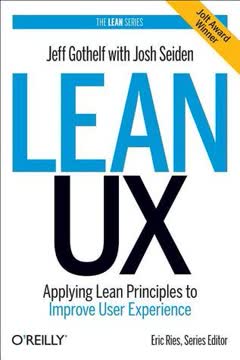

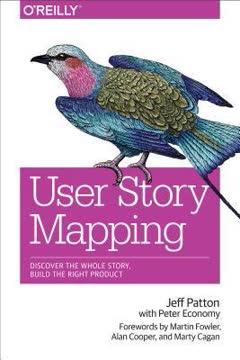
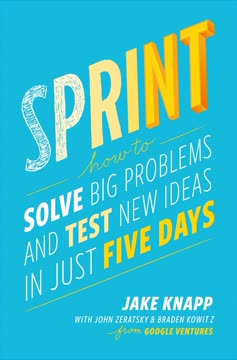

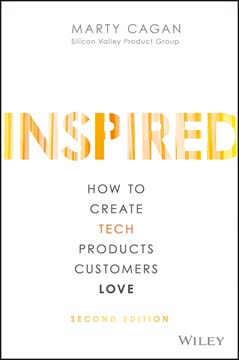



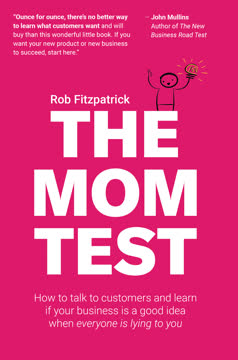
Download PDF
Download EPUB
.epub digital book format is ideal for reading ebooks on phones, tablets, and e-readers.
